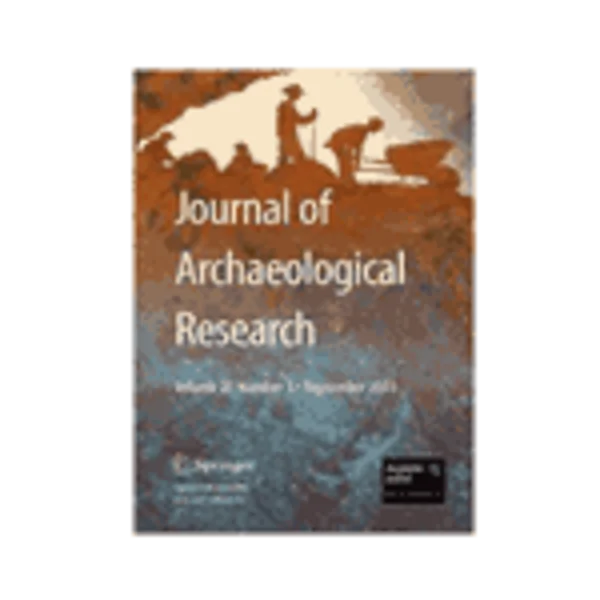-
reevaluating what we know about the histories of maize in northeastern north america: a review of current evidence
جزئیات بیشتر مقاله- تاریخ ارائه: 1392/07/24
- تاریخ انتشار در تی پی بین: 1392/07/24
- تعداد بازدید: 1199
- تعداد پرسش و پاسخ ها: 0
- شماره تماس دبیرخانه رویداد: -
the adoption of maize in northeastern north america is often seen as a catalyst for the development of settled village life. in this review we develop a theoretical framework centered on shifting-balance theory (sbt) and domesticated landscapes through which to understand the context for the adoption of maize agriculture in the northeast. we review micro- and macrobotanical evidence and stable carbon isotope data from various sources to reevaluate maize histories and adoption trajectories. these data are coupled with contributions of subregionally significant predecessor plants, such as those constituting the eastern agricultural complex, and wild rice. we find no evidence for rapid transitions to settled village life as a result of maize adoption. maize was grown for centuries before settled village agricultural systems evolved. it was grown for a sufficiently long time that the potential for local selection leading to northern flint is a viable working hypothesis. we call for a refocusing of research questions and a systematic application of contemporary techniques as a means by which to strengthen future inferences based on comparative information sets.
مقالات جدیدترین رویدادها
-
استفاده از تحلیل اهمیت-عملکرد در ارائه الگوی مدیریت خلاقیت سازمانی و ارائه راهکار جهت بهبود
-
بررسی تاثیر ارزش وجوه نقد مازاد بر ساختار سرمایه شرکت های پذیرفته شده در بورس اوراق بهادار تهران
-
بررسی تأثیر سطح افشای ریسک بر قرارداد بدهی شرکت های پذیرفته شده در بورس اوراق بهادار تهران
-
بررسی تأثیر رتبه بندی اعتباری مبتنی بر مدل امتیاز بازار نوظهور بر نقد شوندگی سهام با تأکید بر خصوصی سازی شرکت ها
-
تأثیر آمیخته بازاریابی پوشاک ایرانی بر تصویر ذهنی مشتری پوشاک ایرانی (هاکوپیان)
-
بررسی تغییر اندازه سنگ دانه ها بر روی خواص رئولوژیکی و مکانیکی بتن خود تراکم سبک ساخته شده با پوکه معدنی
-
شهرسازی و توسعه ناپایدار شهری؛ مطالعه موردی متروپل تبریز
-
بررسی مدلهای موجود برای هدایت حرارتی و ویسکوزیته در نانوسیال ها
-
بررسی آسیب شناسی آموزش مجازی درس علوم در دوره پیش دبستانی از منظر مربیان شهر میاندوآب
-
biosynthesis of benzoylformic acid from benzoyl cyanide by a newly isolated rhodococcus sp. cczu10-1 in toluene–water biphasic system
مقالات جدیدترین ژورنال ها
-
مدیریت و بررسی افسردگی دانش آموزان دختر مقطع متوسطه دوم در دروان کرونا در شهرستان دزفول
-
مدیریت و بررسی خرد سیاسی در اندیشه ی فردوسی در ادب ایران
-
واکاوی و مدیریت توصیفی قلمدان(جاکلیدی)ضریح در موزه آستان قدس رضوی
-
بررسی تاثیر خلاقیت، دانش و انگیزه کارکنان بر پیشنهادات نوآورانه کارکنان ( مورد مطالعه: هتل های 3 و 4 ستاره استان کرمان)
-
بررسی تاثیر کیفیت سیستم های اطلاعاتی بر تصمیم گیری موفق در شرکتهای تولیدی استان اصفهان (مورد مطالعه: مدیران شرکتهای تولیدی استان اصفهان)
-
نقش مدیریت شهری در مناطق حاشیه نشین با تاکید بر ایران
-
مدیریت و کاهش بهای تمام شده، با محوریت طبقه بندی طبیعی هزینه ها در کسب کارهای کارآفرینانه با رویکرد ارزش آفرینی
-
فرآیند پیش نگری ، تاثیرات آن در عکاسی فتوشیمیایی و نحوه احیاء آن در عکاسی دیجیتال
-
scrutinization of the relationship between organizational agility and the application of information and communication technology in the education organization of shirvan township in the year 2015
-
investigating the seismic performance of steel moment-resisting frames by using damage index




سوال خود را در مورد این مقاله مطرح نمایید :